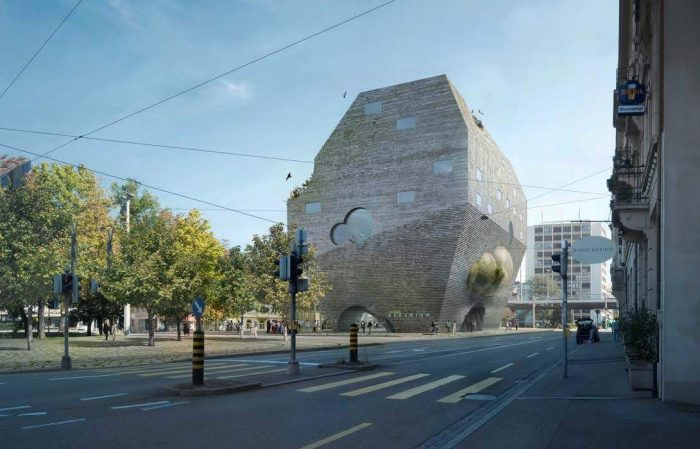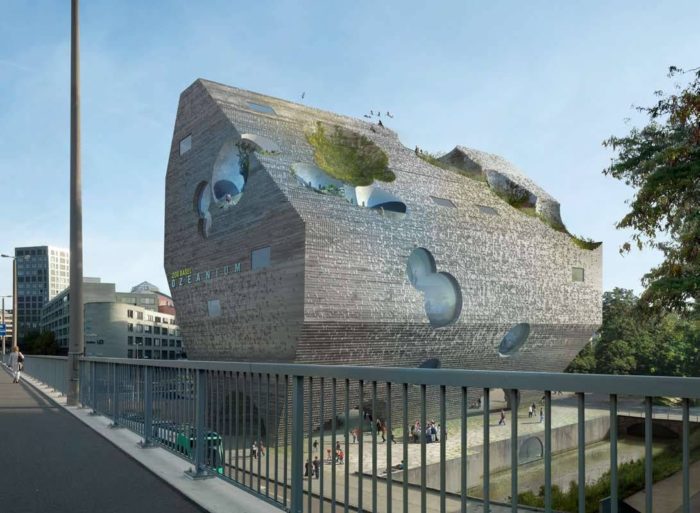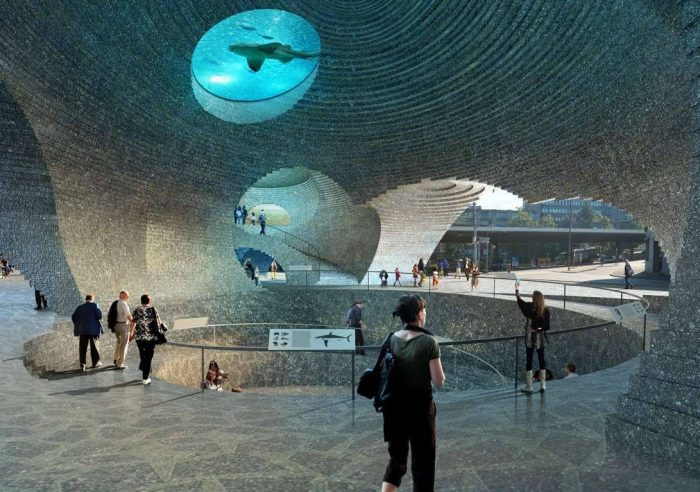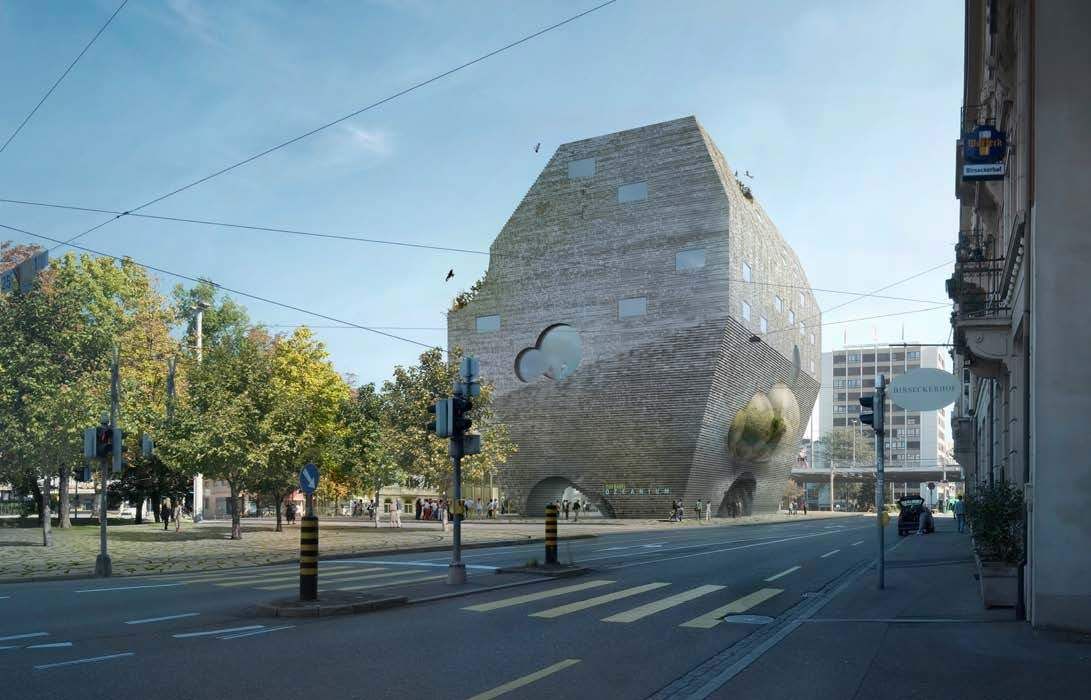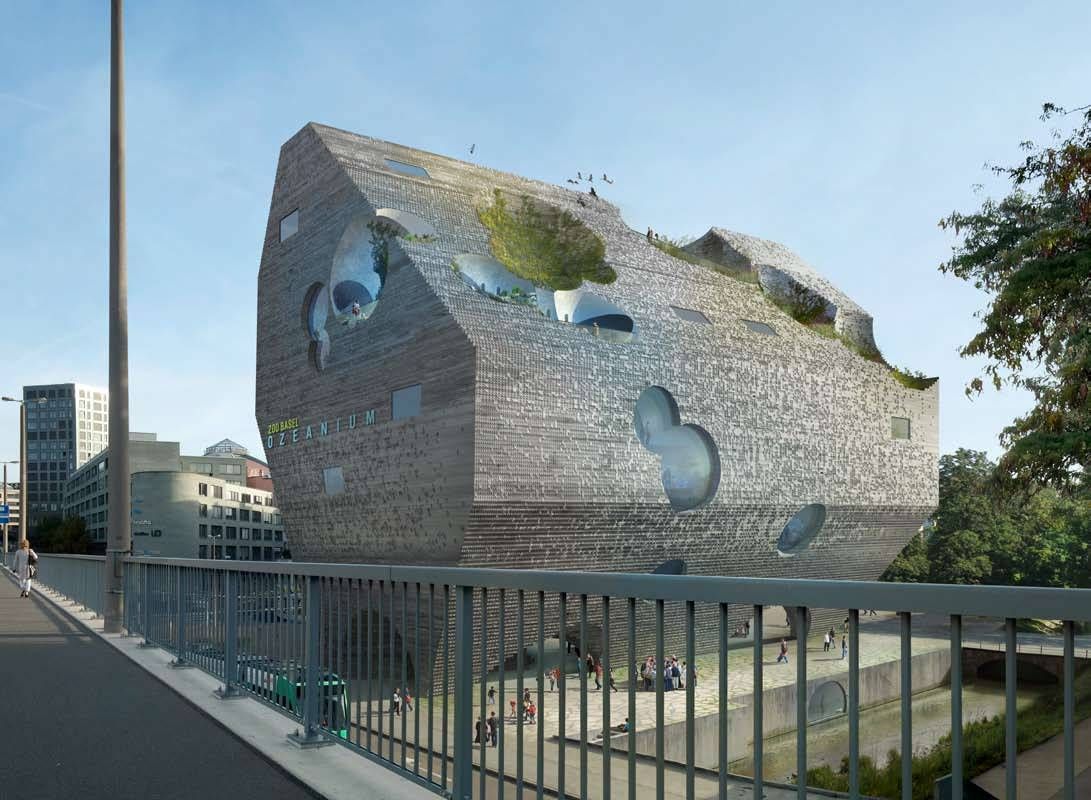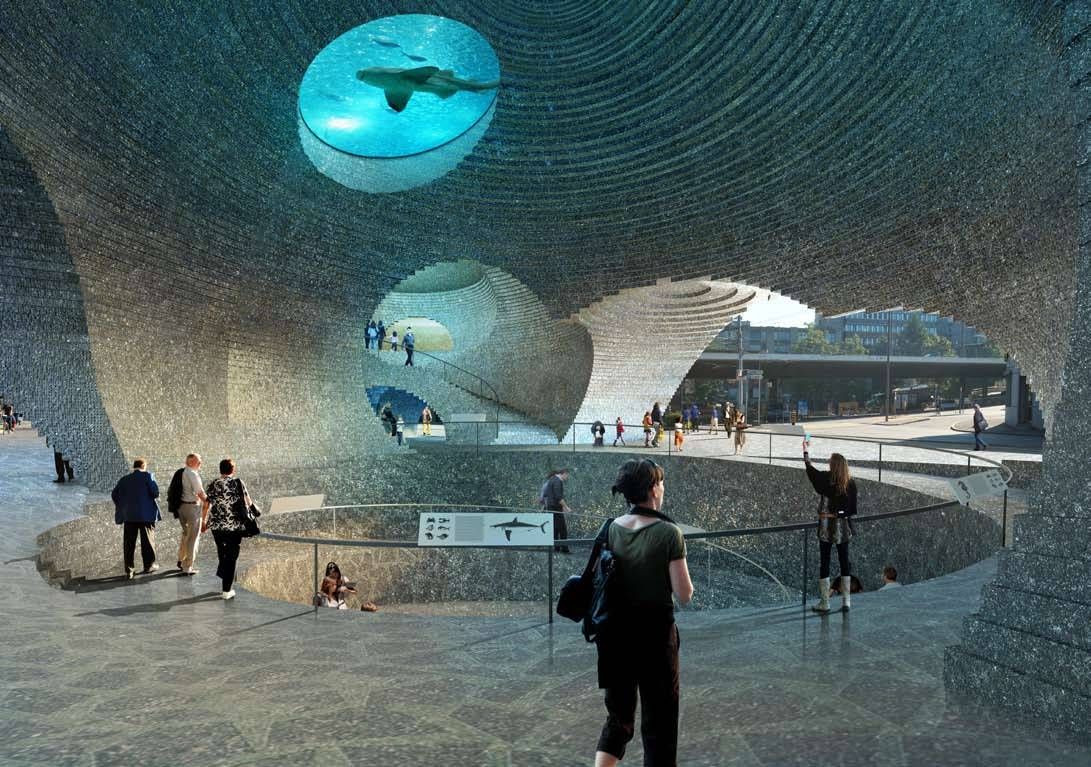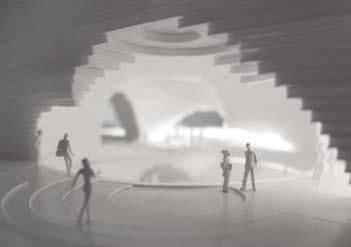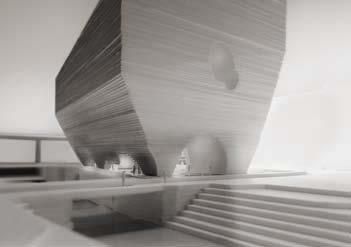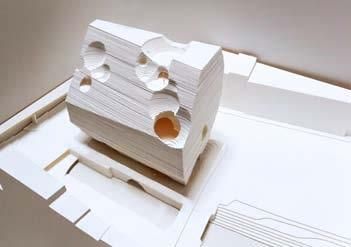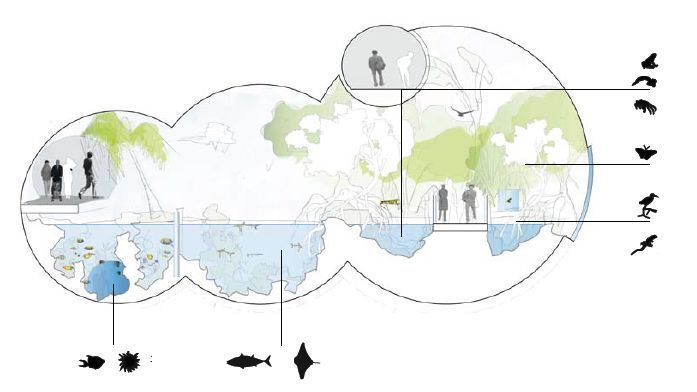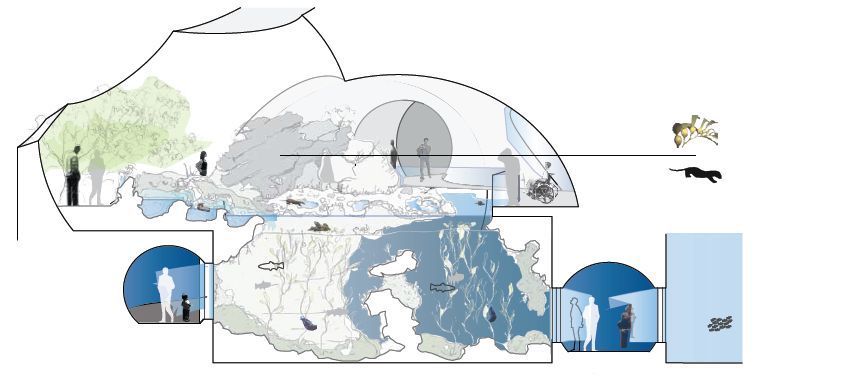Ozeanium
Zoo Basel is embedded in the city and used as a park by both residents and visitors. The redesign of the surrounding landscape and the construction of the new “Ozeanium” (ocean aquarium) on an adjacent site are bringing the zoo and the park area even closer to the city center, to form an attractive living and recreational environment. The proposed Ozeanium reflects the scale of many surrounding buildings, such as the Rialto swimming pool, the market hall, and the tall buildings on the city ring. The bold building massing makes clear what an attraction this Ozeanium will be, enriching the city in a central location. The footprint is an minimal as possible to leave room for future zoo expansion.
The roof and facade are homogenous in terms of the materials and the language of forms: exposed concrete, horizontally graduated by rough boarding and with sediment-like exogenous inclusions. The seemingly archaic façade is riddled with openings and recesses of various sizes, exposing the Ozeanium’s most important themes to the city beyond. Some of the spherical indentations in the building volume are planted and serve as habitats for birds and small animals.
In the Ozeanium’s dome-like entrance area, which is open on all sides, the enormous weight of the water mass above becomes apparent. All of the building’s most important functions can be seen directly from this vantage point. A ramp leads down to the foyer and elevators; passages and staircases lead to the bar, the temporary exhibition and the museum shop. Everything for which the building is used can be accessed directly from the entrance area on foot, by wheelchair, or with a baby buggy. This public area, while protected from the elements, is outdoors and is closed off at night by means of grating.
To begin their tour, visitors to the Ozeanium are carried up to the top floor by elevator, where they can dine in a restaurant with spectacular views of the city. From there they walk down a gently sloped, continuous ramp that takes them on a fictive journey around the oceans of the world. On this journey, four “aquarium clusters” – large, interconnected exhibition rooms – constitute scenographic highlights.
Project Info
Architects: HHF Architects, Burckhardt + Partner
Location: Basel, Switzerland
Team HHF: Herlach Hartmann Frommenwiller, with Aleris Rodgers, Jelena Vucic, Sarah Gill, Walter Rudig, Philippe Ayer, Benjamin Krüger, Sabrina Wolf, Ivana Barisic, Terese Viltoft, Hanru Wu, Tommaso Arnaboldi, André Manso
Team Burckhardt + Partner: Wolfgang Hardt, Sacha Marchal, Jeannine Roschi, Tobias Eglauer
Aquarium Planning: Aliart Engineering, SL/Bluedisplays, Barcelona, Spain; Xavier Aliart, Silvia Vicente Molina, Miguel Villalobos
Landscape: Topotek 1, Berlin, Germany; Martin Rein-Cano, Francesca Venier, Celine Baumann
Structural Engineering: Schnetzer Puskas Ingenieure, Basel, Switzerland; Tivadar Puskas, Ayumi Isozaki, Giotto Messi
Mechanical Engineering: Stokar + Partner, Basel, Switzerland
Visual Communication: Tatin Design Studio, Basel, Switzerland; Oliver Mayer, Gian Besset
Status: Open 2-stage competition, 2nd prize
Year: 2012
Type: Aquarium
Courtesy of HHF Architects, Burckhardt + Partner
Courtesy of HHF Architects, Burckhardt + Partner
Courtesy of HHF Architects, Burckhardt + Partner
Courtesy of HHF Architects, Burckhardt + Partner
Courtesy of HHF Architects, Burckhardt + Partner
Courtesy of HHF Architects, Burckhardt + Partner
Courtesy of HHF Architects, Burckhardt + Partner
Courtesy of HHF Architects, Burckhardt + Partner
Courtesy of HHF Architects, Burckhardt + Partner


